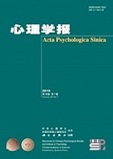|
|
How Does Personality Relate to Mental Health in Service Industry Setting? The Mediating Effects of Emotional Labor Strategies
HUANG Min-Er,WU Zhong-Qi,TANG Gan-Qi
2010, 42 (12):
1175-1189.
The study investigated the correlations between personality traits, emotional labor strategies and mental health in service industry settings. Substantial literature has suggested that there is a significant relation between personality traits (e.g., extraversion, neuroticism) and mental health. However, personality traits are associated with emotional labor– that is, emotion regulation in workplace. Emotional labor strategies include surface action, deep action, and autonomic action, and they also have different effects on mental health. The present study examined the mediating effects of emotional labor strategies upon personality traits and mental health in a group of employees from service industry settings.
357 employees recruiting from nine local industry settings took part in the current study. All of them were administered with a set of questionnaires assessing personality by the QZPS Chinese Personality Scale (Wang & Cui, 2004), measuring emotional labor strategies by Scale of Emotional Labor (Diefendorff, Croyle, and Gosserand, 2005). Measurement of mental health indexes included Emotional Exhaustion Scale (Simpson & Stroh, 2004), Psychological Inauthenticity Scale (Simpson & Stroh, 2004), and Scale of Physical & Psychological Strain (Siu, Spector, Cooper, & Lu, 2005).
A series of path analyses were conducted to test 1) the relations between traits, emotional labor strategies, and mental health state in multiple indexes, and 2) the mediation of emotional labor strategies upon the traits and mental health indexes. Results demonstrated that: (1) in QZPS, Kindness predicted less surface acting, and more autonomic regulation; Capability predicted better deep-acting; Working style predicted more autonomic regulation. Emotionality predicted less deep action; Others-orientation predicted less surface-acting and more autonomic regulation, Self-orientation predicted more deep-acting; Object-orientation predicted more deep and autonomic regulation, and less surface-acting; (2) surface action predicted worse mental health and deep action and autonomic action predicted better mental health; (3) surface-acting mediated the effects of traits (kindness, and others-orientation) upon mental health, deep-acting mediated the effects of traits (emotionality, capability, self-orientation, and object-orientation) upon mental health, and autonomic regulation mediated the effects of traits (kindness, working style, and object–orientation) upon mental health; and (4) extraversion predicted better mental health directly.
The results indicated that people with higher scores on Extraversion, Kindness, Capability, Working style, Object-orientation, Self- and Others-Orientation could be considered as better candidates working in service industry settings. Candidates with a higher score on Emotionality could be regarded as a less adaptive one at the working situation. Professional psychological training and psychological counseling for employees working in service industry settings should focus on how to facilitate more autonomic action and deep action so as to maintain and improve mental health. The present study provided evidences for potential applications in personnel assessment, recruitment, and occupational health improvement in service industry settings.
Related Articles |
Metrics
|




